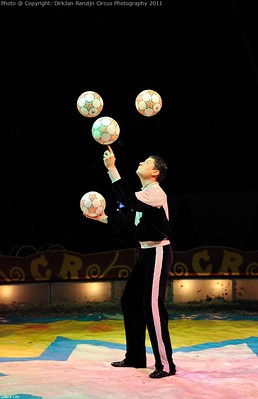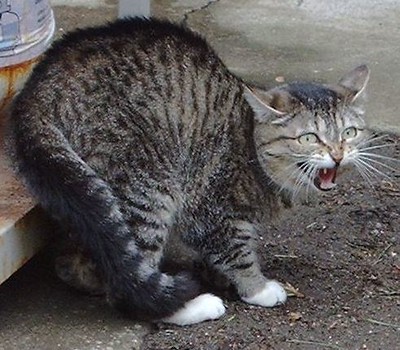Archive for September, 2022
What’s missing?
 If there’s no problem, there can be no solution.
If there’s no problem, there can be no solution.
If there’s no dissatisfaction, there can be no change.
If there’s no caring, there can be no disagreement, though there can be arguments.
If there is a wanting for things to be different, there can be no happiness, though there will be suffering.
If there’s no room for objection, there’s no contract for meeting objectives.
If there’s a truth untold, there can be no closeness.
If there’s no self-love, there can be no perseverance.
If there is no uncertainty, there can be no learning.
If there is no humility, there can be no change.
If there’s no tolerance for unpredictability, there can be no novelty.
If there’s no inefficiency, there is no adaptability.
If there’s no slack, there’s no room for creativity.
If there’s no room for judgment, there is no trust.
If there’s no trust, there’s no future.
How To Complete More Projects
 Before you decide which project to start, decide which project you’ll stop.
Before you decide which project to start, decide which project you’ll stop.
The best way to stop a project is to finish it. The next best way is to move the resources to a more important project.
If you find yourself starting before finishing, stop starting and start finishing.
People’s output is finite. Adding a project that violates their human capacity will not result in more completed projects but will cause your best people to leave.
If people’s calendars are full, the only way to start something new is to stop something old.
If you start more projects than you finish, you’re stopping projects before they’re finished. You’re probably not stopping them in an official way, rather, you’re letting them wither and die a slow death. But you’re definitely stopping them.
When you start more projects than you finish, the number of active projects increases. And without a corresponding increase in resources, fewer projects are completed.
The best way to reduce the number of projects you finish is to start new projects.
Make a list of the projects that you stopped over the last year. Is it a short list?
Make a list of projects that are understaffed and under-resourced yet still running in the background. Is that list longer?
A rule to live by: If a project is understaffed, staff it or stop it.
If you can’t do that, reduce the scope to fit the resources or stop it.
Would you prefer to complete one project at a time or do three simultaneously and complete none?
When it comes to stopping projects, it’s stopped or it isn’t. There’s no partial credit for talking about stopping a project.
If you want to learn if a project is worthy of more resources, stop the project. If the needed resources flow to the project, the project is worthy. If not, at least you stopped a project that shouldn’t have been started.
People don’t like working on projects where the work content is greater than the resources to do the work. These projects are a major source of burnout.
If you know you have too many projects, everyone else knows it too. Stop the weakest projects or your credibility will suffer.
“Circus Renz Berlin, Holland 2011” by dirkjanranzijn is licensed under CC BY-ND 2.0.
It’s good to have experience, until the fundamentals change.
 We use our previous experiences as context for decisions we make in the present. When we have a bad experience, the experience-context pair gets stored away in our memory so that we can avoid a similar bad outcome when a similar context arises. And when we have a good experience, or we’re successful, that memory-context pair gets stored away for future reuse. This reuse approach saves time and energy and, most of the time keeps us safe. It’s nature’s way of helping us do more of what works and less of what doesn’t.
We use our previous experiences as context for decisions we make in the present. When we have a bad experience, the experience-context pair gets stored away in our memory so that we can avoid a similar bad outcome when a similar context arises. And when we have a good experience, or we’re successful, that memory-context pair gets stored away for future reuse. This reuse approach saves time and energy and, most of the time keeps us safe. It’s nature’s way of helping us do more of what works and less of what doesn’t.
The system works well when we correctly match the historical context with today’s context and the system’s fundamentals remain unchanged. There are two potential failure modes here. The first is when we mistakenly map the context of today’s situation with a memory-context pair that does not apply. With this, we misapply our experience-based knowledge in a context that demands different knowledge and different decisions. The second (and more dangerous) failure mode is when we correctly identify the match between past and current contexts but the rules that underpin the context have changed. Here, we feel good that we know how things will turn out, and, at the same time, we’re oblivious to the reality that our experience-based knowledge is out of date.
“If a cat sits on a hot stove, that cat won’t sit on a hot stove again. That cat won’t sit on a cold stove either. That cat just don’t like stoves.” Mark Twain
If you tried something ten years ago and it failed, it’s possible that the underpinning technology has changed and it’s time to give it another try.
If you’ve been successful doing the same thing over the last ten years, it’s possible that the underpinning business model has changed and it’s time to give a different one a try.
“Hissing cat” by Consumerist Dot Com is licensed under CC BY 2.0.
Students, Teachers, and Learning
 If the student has no interest, they are not yet a student and it’s not yet time for learning.
If the student has no interest, they are not yet a student and it’s not yet time for learning.
Learning comes hard, especially when it’s not wanted.
The teacher that tries to teach a student that’s not yet a student is not yet a teacher.
There can be no teacher without a student.
If there’s no doing, there’s no learning. And it’s the same if there’s no theory.
Apprenticeship creates deep learning, but it takes two years.
Learning is inefficient, but it’s far more efficient than not learning.
When you know the student is ready, turn your back so they can see it for themselves.
Objective evidence of deep learning: When students can navigate situations that are outside the curriculum.
“May 14, 2006: Happy Mother’s Day” by Matt McGee is licensed under CC BY-ND 2.0.
 Mike Shipulski
Mike Shipulski